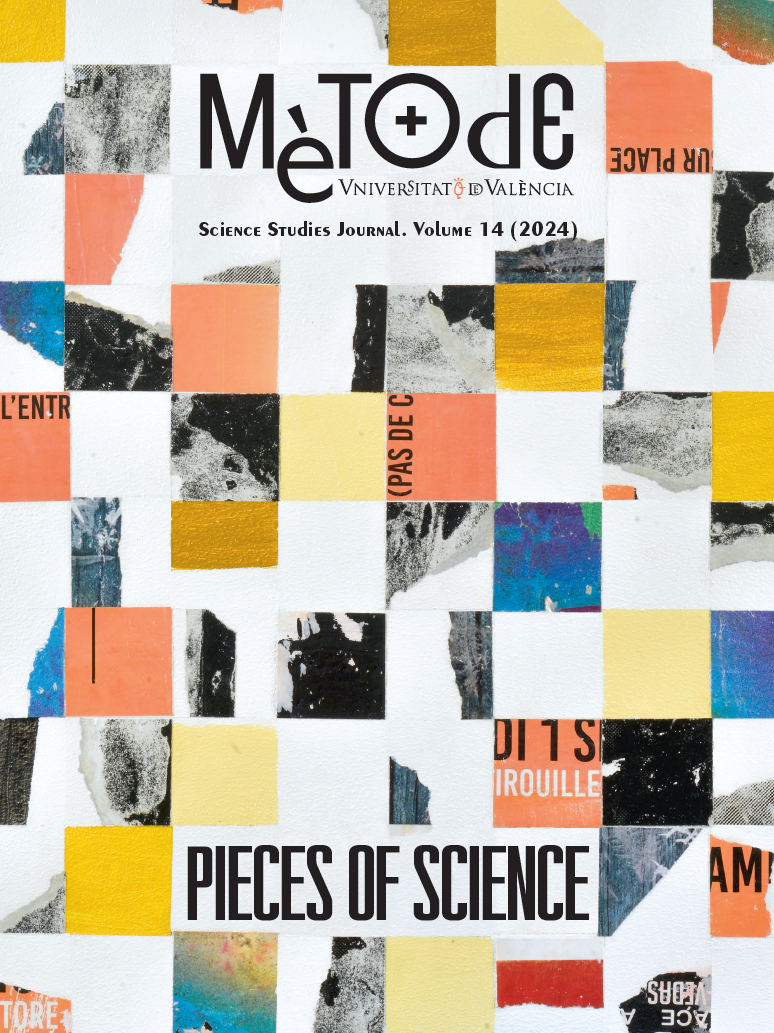Primate social behaviour: Benefits, challenges and diversity of relations
DOI:
https://doi.org/10.7203/metode.14.25454Keywords:
sociality, development, primates, social learning, evolution Abstract
Abstract
Primates usually live in groups and interact with other group members, sometimes forming preferential long-term relationships. Sociality provides primates with benefits like support and learning opportunities that ultimately increase their fitness. Sociality also poses challenges in terms of competition and coordination, though, which primates face with the use of different behavioural and cognitive strategies. Moreover, primates show important variation in sociality, both between species, between groups, across individuals and through developmental stages. Overall, observational studies are a powerful tool to understand the richness in primate sociality, and the factors that explain the emergence and maintenance of specific forms of sociality and behavioural traits.
 Downloads
Downloads
 References
References
Amici, F., Widdig, A., von Fersen, L., Lopez Caicoya, A., & Majolo, B. (2021). Intra-specific variation in the social behaviour of Barbary macaques (Macaca sylvanus). Frontiers in Psychology, 12, 666166. https://doi.org/10.3389/fpsyg.2021.666166
Archie, E. A., Tung, J., Clark, M., Altmann, J., & Alberts, S. C. (2014). Social affiliation matters: Both same-sex and opposite-sex relationships predict survival in wild female baboons. Proceedings of the Royal Society B, 281, 20141261. https://doi.org/10.1098/rspb.2014.1261
Aureli, F., Schaffner, C. M., Boesch, C., Bearder, S. K., Call, J., Chapman, C. A., Connor, R., Di Fiore, A., Dunbar, R. I. M., Petmann, S., Manson, J. H., Ramos-Fernandez, G., Strier, K. B., & van Schaik, C. P. (2008). Fission-fusion dynamics: New research frameworks. Current Anthropology, 48, 627–654. https://doi.org/10.1086/586708
Burghardt, G. M. (2005). The genesis of animal play: Testing the limits. MIT Press.
Dunbar, R. I. M. (2012). Bridging the bonding gap: The transition from primates to humans. Philosophical Transactions of the Royal Society B, 367, 1837–1846. https://doi.org/10.1098/rstb.2011.0217
Heyes, C. M. (1994). Social learning in animals: Categories and mechanisms. Biological Reviews, 69, 207–231. https://doi.org/10.1111/j.1469-185X.1994.tb01506.x
Joly, M., Micheletta, J., De Marco, A., Langermans, J. A., Sterck, E. H. M., & Waller, B. M. (2017). Comparing physical and social cognitive skills in macaque species with different degrees of social tolerance. Proceedings of the Royal Society B, 284, 20162738. https://doi.org/10.1098/rspb.2016.2738
Mitani, J. C., Call, J., Kappeler, P. M., Palombit, R., & Silk, J. (Eds.). (2012). The evolution of primate societies. University of Chicago Press.
Reader, S. M., & Laland, K. N. (2003). Animal innovation. Oxford University Press.
Sánchez-Amaro, A., & Amici, F. (2015). Are primates out of the market? Animal Behaviour, 110, 51–60. https://doi.org/10.1016/j.anbehav.2015.09.020
Silk, J. B., Beehner, J. C., Bergman, T. J., Crockdord, C., Engh, A. L., Moscovice, L. R., Wittig, R. M., Seyfarth, R. M., & Cheney, D. L. (2009). The benefits of social capital: Close social bonds among female baboons enhance offspring survival. Proceedings of the Royal Society B, 276, 3099–3104. https://doi.org/10.1098/rspb.2009.0681
Tennie, C., Bandini, E., Van Schaik, C. P., & Hopper, L. M. (2020). The zone of latent solutions and its relevance to understanding ape cultures. Biology & Philosophy, 35, 1–42. https://doi.org/10.1007/s10539-020-09769-9
Whiten, A., & Byrne, R. W. (1988). Tactical deception in primates. Behavioral and Brain Sciences, 11, 233–273. https://doi.org/10.1017/S0140525X00049682
Downloads
Published
How to Cite
-
Abstract1476
-
PDF218
-
(Español)4
Issue
Section
License
Copyright (c) 2023 CC BY-NC-ND 4.0

This work is licensed under a Creative Commons Attribution-NonCommercial-NoDerivatives 4.0 International License.
![]()
All the documents in the OJS platform are open access and property of their respective authors.
Authors publishing in the journal agree to the following terms:
- Authors keep the rights and guarantee Metode Science Studies Journal the right to be the first publication of the document, licensed under a Creative Commons Attribution-NonCommercial-NoDerivatives 4.0 International License that allows others to share the work with an acknowledgement of authorship and publication in the journal.
- Authors are allowed and encouraged to spread their work through electronic means using personal or institutional websites (institutional open archives, personal websites or professional and academic networks profiles) once the text has been published.





